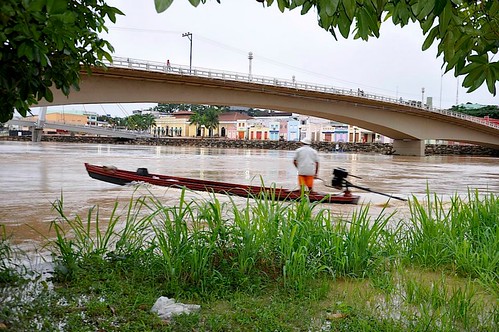
Flooding in Rio Branco - Foto: Marcos Vicentti
[UPDATE- 12:40pm - Sunday 19 February: The Acre River has reached 17.15cm (the record high water is 17.66cm) and is expected to keep rising as the headwaters tributaries continue to discharge. There are 4,115 homeless people who are under the responsibility of the Civil Defense in makeshift shelters. More than 12,000 homes and more than 49,000 people have been affected by flooding, according to estimates by civil defense. More at the blog of Altino Machado.]
Extreme events are what the models of global warming have predicted and every year the extremes seem to get worse. During the long dry season the soil loses porosity, compacts and becomes less permeable. When the rainy season arrives, the water is not sufficiently absorbed and flooding is the natural consequence. Last August Acre experienced near-record low water. Now, only 6 months later, the forecast is that the flood of 2012 will produce record-breaking high water.
It should be noted that the current water levels are actually much higher than the numeric levels of the past. The level is an expression of depth of the water. But over the years erosion has deposited silt in the river bed and raised it. This erosion is the result of agriculture and other human disturbances along the rivers and streams. Protecting these riparian zones is one of the great issues in the current struggle to revise the Federal Forest Code.
Below are some comparative photos collected at the Facebook page of Altino Machado. The difference in water levels is more than 40 feet.

Rio Acre -- 31 August 2011

Rio Acre -- 16 February 2012






No comments:
Post a Comment